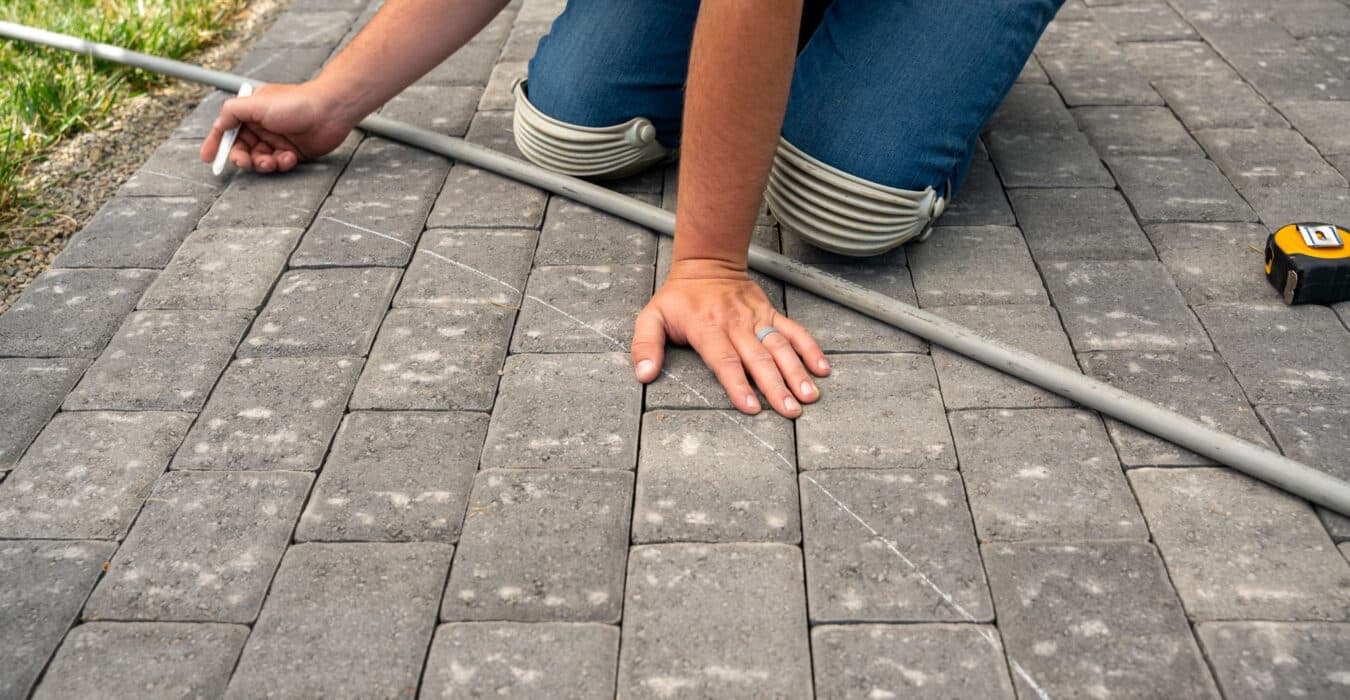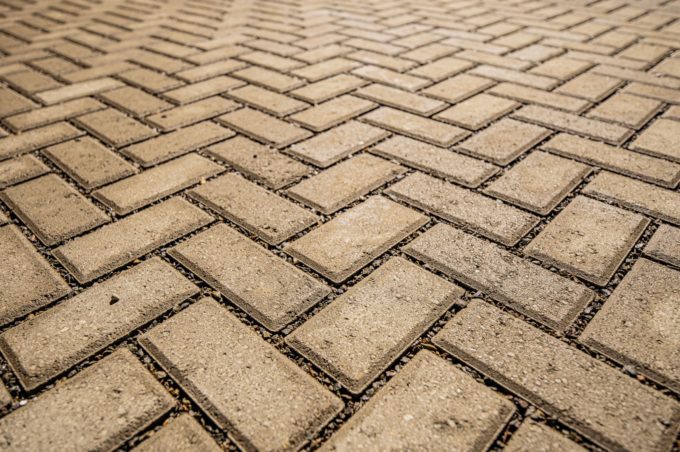Get our FREE Project Planning Guide
"*" indicates required fields
It’s no secret that pavers in almost any form add luxury and elegance to a landscape. Square shapes created from pavers look excellent—but there is nothing like a beautifully cut curve on a patio or other hardscape.
Cutting curves is challenging, though! It takes practice and patience to do it like a professional.
With a few pointers, anyone can cut a curve in their pavers. In this blog post, we will give you a few tips and tricks—straight from the pros— for cutting a curved paver edge.
Types of curves you will need to cut for pavers
First, let’s talk about the curves that can be used to make a beautiful, rounded patio edge.
Convex curves
A convex curve is an outward curve. You’ll need to make this type of curve if you have a patio with one side square against a foundation or border and the other side rounded out into the yard.
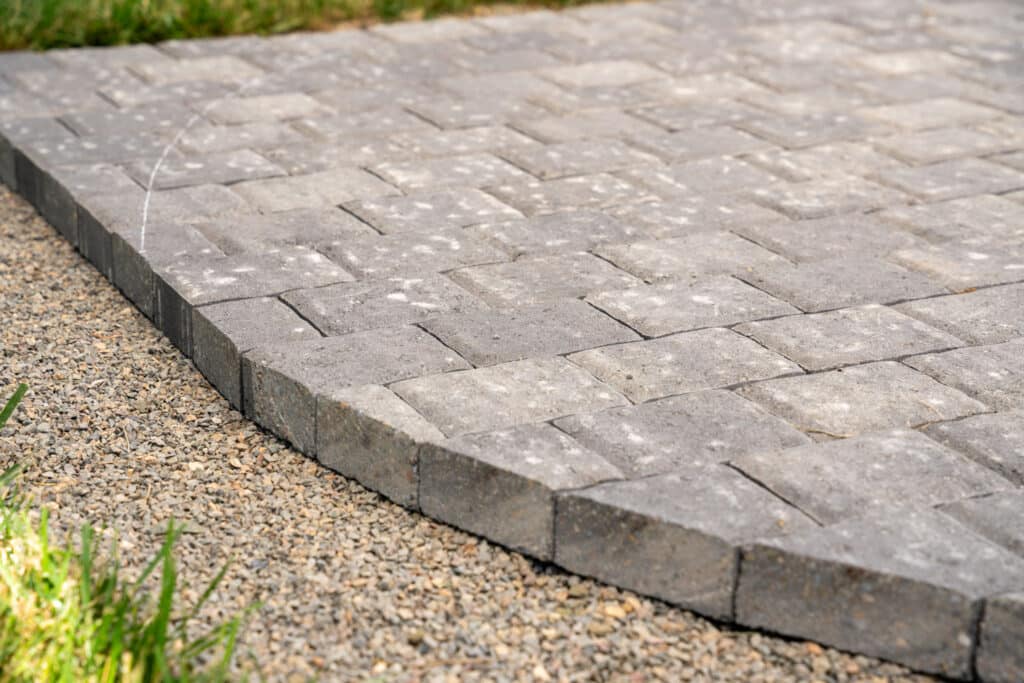
Concave curves
A concave curve is an inward curve, the opposite of a convex. This curve in your pavers is needed if you have a patio with one side in the corner of a foundation or border and the other side rounded along the house.
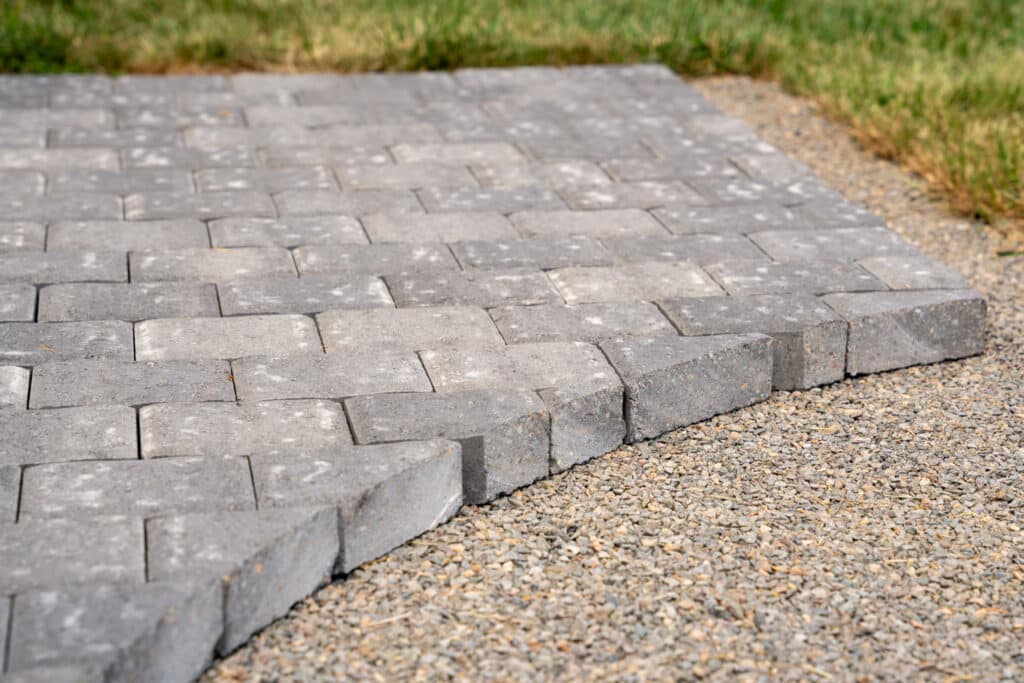
Convex and concave curves
Does your patio need both types of curves? Mixing the angles you use in your pavers to create a wave pattern is possible. Both sides are concave and convex, respectively, making a lovely variation in your patio.
Three pro tips for correctly cutting pavers for curves
1. Lay your paver pattern flat
The first thing you need to do when cutting a paver for a curve is to lay the pavers flat. Most people think you must stack or overlay the pavers on the turn, but that’s inaccurate. Lay the pavers as though filling a square or rectangle. Be sure the pavers are correctly in place, lay flat, and extend adequately over the curve lines.
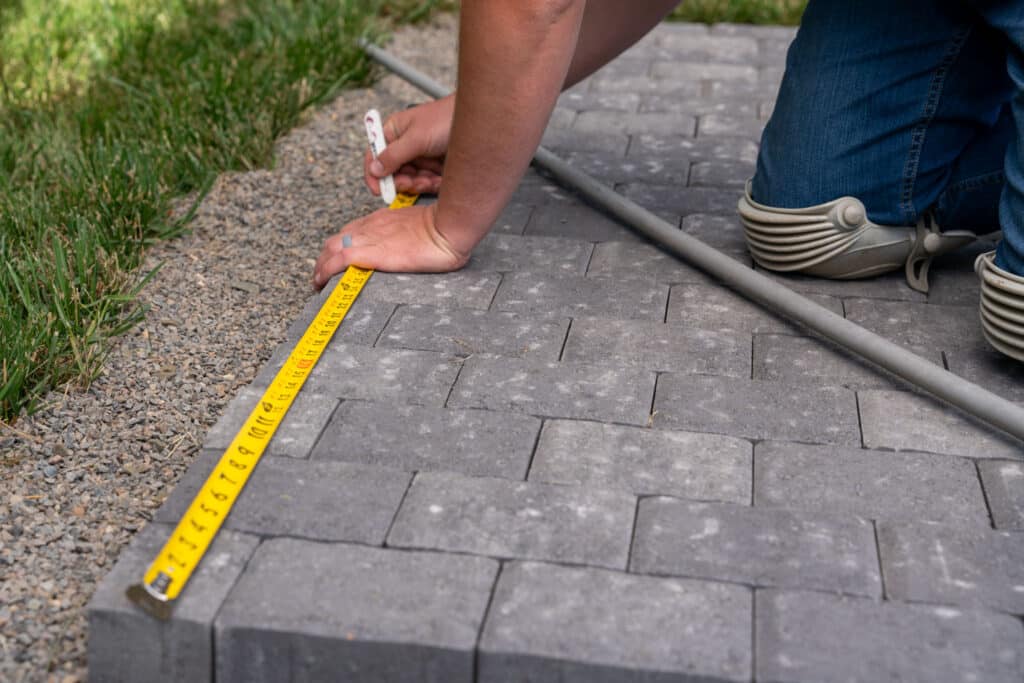
2. Use a flexible guide as a reference line
If you are cutting pavers for a curve, ensure you have a flexible guide you can use as a reference line. One option is a garden hose—it will stay in place and move quickly if needed. Other people use PVC pipes as their guide. PVC is bendable and makes for a smooth and even curve.
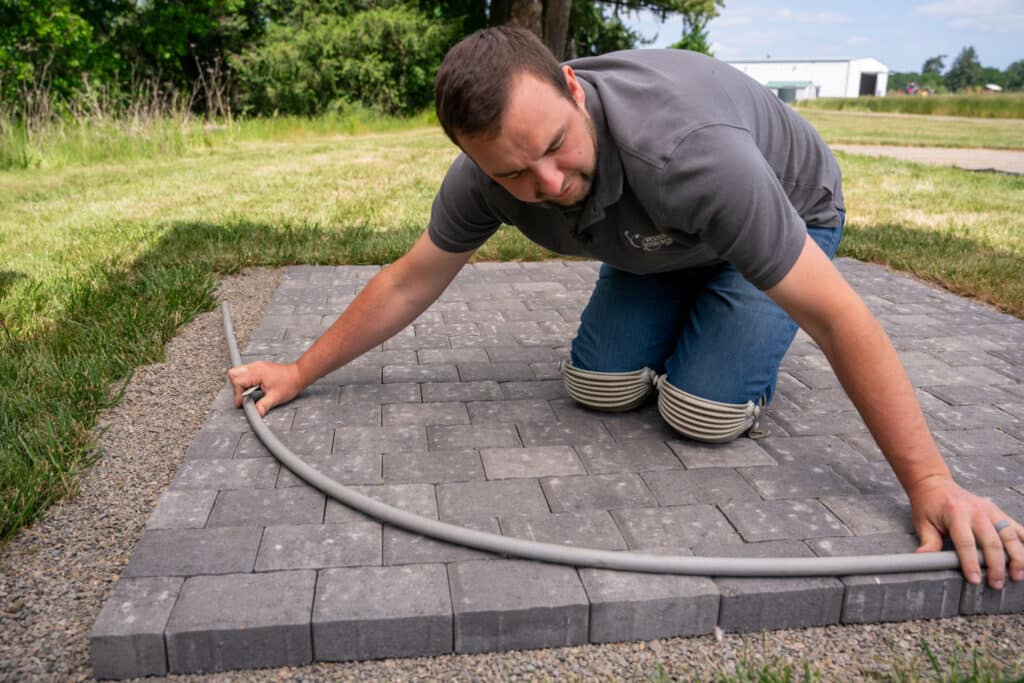
Use pegs or stakes to hold the hose or PVC in place. Also, mark your pavers with white chalk or a paver marker.
3. Use a wet saw to cut pavers
There are a variety of ways to cut your pavers. However, score your marks with a paver marker or dry saw before cutting. Using a dry saw ensures your marks won’t wash or rub away. Please do not cut the pavers in their place. Once marked and scored, remove them one at a time, cut them independently, and place them back into the curve you create.
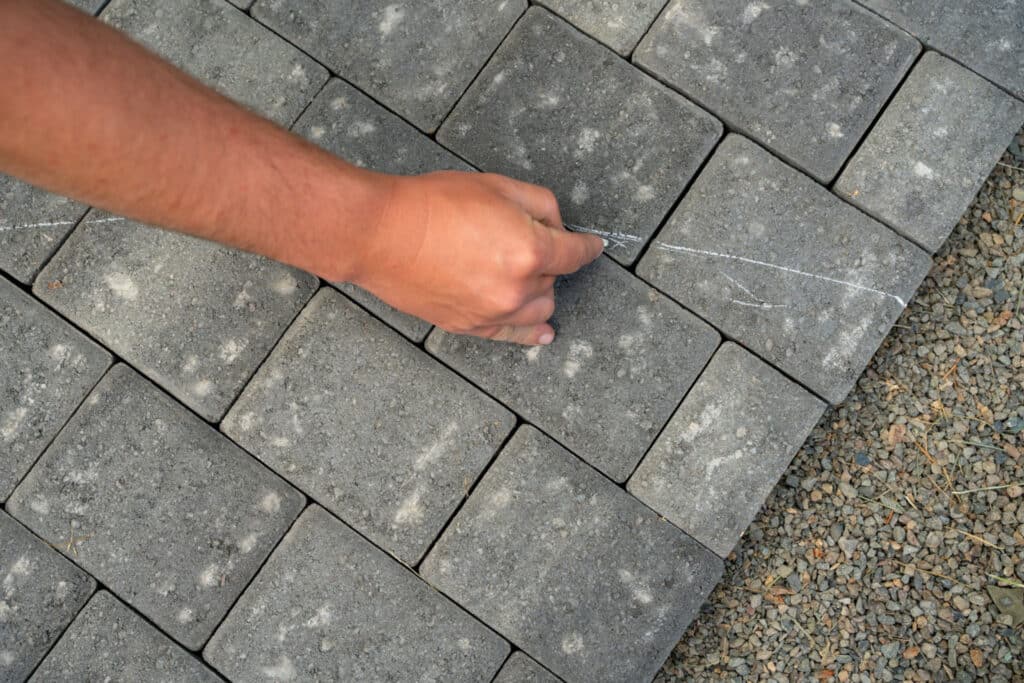
Be sure to use a diamond blade to cut the curve, and do not attempt to use other blade types. Using different kinds of blades could result in injury or damage. Cut the pavers with a wet saw by having someone spray the paver while you cut. If you do not cut with a wet paver and saw, there will be a lot of dust that can be against OSHA guidelines and harmful to your health.
Plan the perfect curved patio or walkway
Do you need help planning your paver project? Click here to download our free Project Planning Guide and get all the details you need to install an excellent curved patio or walkway.
Get our FREE Project Planning Guide
Tell us where to send it and we’ll email the backyard planning guide to you right away!
"*" indicates required fields

